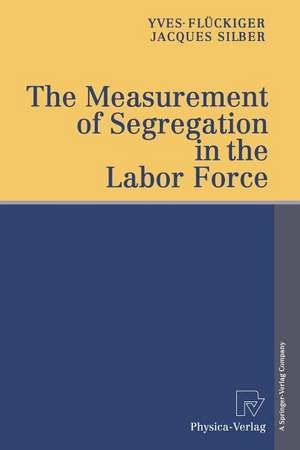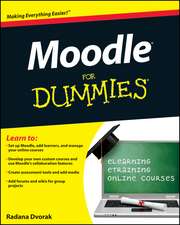The Measurement of Segregation in the Labor Force
Autor Yves Flückiger, Jacques Silberen Limba Engleză Paperback – 8 mar 2012
Preț: 635.31 lei
Preț vechi: 747.43 lei
-15% Nou
Puncte Express: 953
Preț estimativ în valută:
121.59€ • 125.86$ • 102.76£
121.59€ • 125.86$ • 102.76£
Carte tipărită la comandă
Livrare economică 06-20 martie
Preluare comenzi: 021 569.72.76
Specificații
ISBN-13: 9783642470424
ISBN-10: 3642470424
Pagini: 192
Ilustrații: X, 170 p.
Dimensiuni: 155 x 235 x 10 mm
Greutate: 0.28 kg
Ediția:Softcover reprint of the original 1st ed. 1999
Editura: Physica-Verlag HD
Colecția Physica
Locul publicării:Heidelberg, Germany
ISBN-10: 3642470424
Pagini: 192
Ilustrații: X, 170 p.
Dimensiuni: 155 x 235 x 10 mm
Greutate: 0.28 kg
Ediția:Softcover reprint of the original 1st ed. 1999
Editura: Physica-Verlag HD
Colecția Physica
Locul publicării:Heidelberg, Germany
Public țintă
ResearchCuprins
One: Introduction.- Two: Measuring the Concentration of Women in Specific Occupations and Industries.- 2.1 Introduction.- 2.2 The Oppenheimer Approach.- 2.3 An Alternative Measure of the Concentration of Occupations and Industries.- 2.4 The Marginal Matching Approach.- 2.5 The “Bootstrap Approach”.- Appendix 2.A: List of Two-Digit Occupations (Swiss Census, 1980).- Appendix 2.B: List of Three-Digit industries (Swiss Census, 1980).- Three: On the Concept of Occupational Segregation.- 3.1 Occupational Segregation as Reflecting the Dispersion of the Gender Ratios.- 3.2 Occupational Segregation by Gender and the Overlapping of Two Distributions of the Gender Ratios.- Four: Cardinal Measures of Occupational Segregation.- 4.1 A Short Survey of the Existing segregation Indices.- 4.2 An Illustration: Segregation by Gender in Switzerland in 1970, 1980 and 1990.- Five: The Comparison of the Performance of the Different Segregation Indices.- 5.1 On the Desirable Properties of a Segregation Index.- Six: The Ordinal Approach to the Study of Occupational Seregatiogn by Gender.- 6.1 The Concept of Segregation Curve.- 6.2 The Segregation Curve, the Duncans’ and the Gini- Segregation Indices.- 6.3 An Axiomatic Approach to an Ordinal Measure of Occupational Segregation by Gender.- 6.4 The Parametric Approach to the Study of Occupational Segregation.- 6.5 Occupational Segregation by Gender in Switzerland and the Parametrization of Segregation Curves.- Seven: The Decomposition by Population Subgroups of Segregation by Gender in the Labor Force.- 7.1 Introduction.- 7.2 The Effect of Aggregation on Occupational Segregation.- 7.3 Aggregation and Occupational Segregation by Gender in Switzerland.- 7.4 The Respective Impact of Occupations and Industries on Segregation by Gender in theLabor Force.- 7.5 Occupational Versus Industrial Segregation by Gender in Switzerland (1980).- Eight: The Analysis of Changes and Differences in Occupational Segregation by Gender.- 8.1 Introduction.- 8.2 The Duncans’ Index and the Study of Changes in Occupational Segregation by Gender.- 8.3 The Gini-Segregation Index and the Analysis of Changes in Occupational Segregation by Gender.- 8.4 Changes Over Time in Occupational and Industrial Segregation by Gender: The Case of Switzerland (1970–1980).- Nine: The Multidimensional Analysis of Segregation in the Labor Force.- 9.1 Introduction.- 9.2 The Generalization of the Duncans’ and the Gini- Segregation Indices.- 9.3 The Decomposition of Changes in the Multidimensional G-Segregation Index.- 9.4 An Iterative Approach to the Analysis of Change in the Multidimensional G-Segregation Index.- Ten: From Occupational Segregation to Wage Discrimination by Gender.- 10.1 Introduction.- 10.2 The Data.- 10.3 The Impact of the Various Components of Human Capital on the Earnings of the Workers.- 10.4 The Breakdown of the Income Differential by Gender.- 10.5 The Role of Occupational Segregation.- Appendix 10.A: Definition of the Various Variables.- Bibliographic References.- Authors’ Index.














